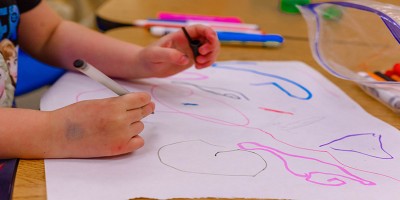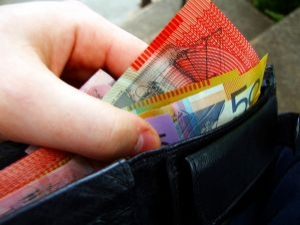At its simplest, child-initiated learning is one that is chosen and started by the child. This type of learning is the purest form of child-centred learning and constitutes one of the most important approaches in the educator’s toolkit of teaching strategies. The following article provides information on the Characteristics and Benefits Of Child initiated Learning, How Educators Can Facilitate It In Their Settings and more.
Meaning
The Early Years Foundation Stage Profile Handbook defines child-initiated learning in the following way:
‘A self-initiated activity is an activity wholly decided on by the child and is the result of an intrinsic motivation to explore a project or express an idea. In doing this the child may make use of a variety of resources and demonstrate a complex range of knowledge, skills and understanding.’
Child-initiated learning is not the same as child-centred learning. The former is chosen and led by the child; it emerges from the child’s own innate curiosity, motivation, and interest and can be occasioned by observation, engagement or experience. Child-centred learning on the other hand is a broader approach that is designed to build on the unique needs, interests, disposition and strengths of each child but need not always be started and independently chosen by the child.
Since play is the natural activity of children, child-initiated learning is most often expressed through child-initiated play though it can also take the form of group activities, singing, cooking, listening to stories, re-telling stories, and going for walks and interacting with visitors to the setting. in fact, child-initiated play can also take off from activities planned by adults if they have been based on observations of children’s ideas and interests during their play.
Characteristics
Child-initiated learning:
- is led or chosen by the child; it can involve adults and other children or be very personal play
- is unique to every child – values individuality and respects their interests
- can’t be wrong since it does not have set outcomes
- starts from what children are interested in
- allows children to choose their own resources, using and adapting according to their interests may begin with a teacher-initiated activity which children then follow through in their own way
- meets the needs of all the children; for example, a child that lives in small flat needs/wants to play outside more)
- involves ideas and concepts that stem from the children
- involves the children in planning and designing the learning process
Benefits Of Child - initiated Learning
- Child-initiated learning almost always takes the form of play – whether social, solitary, dramatic or equipment-based. As a result, children enjoy this type of activity the most and whatever they enjoy, they are likely to do again. In other words, the child-initiated play makes children more motivated and engaged in learning as compared to adult-directed experiences. They are more likely to persist when things get difficult and have a sense of real achievement when they succeed.
- Since child-initiated learning gives children the freedom to choose the activity, as well as the space, time, duration and materials, it builds children’s agency. They feel more assured as explore their surroundings, manipulate objects or create their own meanings through various media. All this strengthens their autonomy since there is no adult to mediate or direct. It gives children ownership allowing them to develop learning both indoors and out.
- Child-initiated activities allow them the opportunity to explore and develop creativity. For example, when children are left free to draw and colour as and with whatever they choose, they engage with the process of creation than the product. Such open-ended processes eschew the notion of right or wrong and allow children to make their own meanings, discoveries and connections with the world around them – all this in turn enriches their knowledge.
- Child-initiated activity encourages communication in the setting. as they express their natural curiosity in play and action, they increasingly look to communicate the discovery to others. Though this is more common in older children than toddlers, onlooker play or parallel play in younger children are important ways in which they learn from each other. Reliving and retelling the experience consolidates the child’s understanding and gives him or her real ‘ownership’ of the knowledge.
- Child-initiated learning also encourages children to develop thinking skills. If given enough time and space to handle objects and explore surroundings, they can arrive at their own understandings about the properties of materials, what certain things can and cannot do and based on these insights plan activities and solve problems as well.
- Child-initiated learning offers advantages to adults as well. When children lead and direct their own play, parents and educators get the chance to observe and identify their interests, styles of communication and learning. this in turn proves invaluable when designing learning environments and planning activities to extend children’s thinking and understanding that have been observed.
How Educators Can Facilitate Child-initiated Learning
Design the environment
Since by definition child initiated learning eschews any educator's direction, it is important to plan the environment in a way that children’s play can lead to learning. some tips on creating a stimulating environment include:
- setting up the classroom which reflects children's interests like equipping play corners with toy dinosaurs and aeroplanes or a treasure chest in the dramatic corner which contains mirrors, capes, scarves, shiny buttons, sparkly purses and so on
- letting children choose from a range of materials and equipment to initiate their own play which in art and crafts need not only be crayons and paint but also assorted paper, scissors, glue and tape, boxes, cloth scraps, foam, feathers and objects to make prints.
- Setting up different interest areas like a reading nook, a construction table, water or sand play trays, a role-play area and a music corner. This lets children know where to look to find something that they are interested in and then initiate their chosen activity
- equipping play areas with unstructured material whose uses are not predetermined thus facilitating open-ended play. these could range from balls, blocks, tubes and cardboard boxes of different sizes to lose parts like beads, sticks, ribbons, stones and rings which offer multiple uses and infinite possibilities for play as children line them up, scatter, carry, knock about, take apart, put together and redesign these parts
- storing toys, materials and equipment in accessible ways so that children can reach and choose themselves; resources should be properly organized, clearly labelled and rotated frequently
- ensuring play areas are safe and free of hazards like, like insects in the outdoors or drowning during water play; indoors, rooms should be arranged to encourage children to self regulate their behaviour like by putting in place clear boundaries, traffic patterns and calming spaces. the setting that is ‘safe’ to experiment in by creating a place where children are secure enough to take risks
Facilitate child-initiated experiences
- the starting point of facilitating child-initiated experiences is having a shared ethos with the service staff on the child-initiated play; educators should be on the same page so that child-initiated play is acknowledged and valued. Other ways of facilitating include:
- providing ample time and adequate space to children for their explorations indoors and outside. For child-led activities to lead to learning, it is necessary that they be allowed enough time to explore, observe, plan and execute; these along with various steps in the problem-solving process – for example, determining how to make the paint stick on a bottle cap – cannot to be completed in a hurry which is why it is important that children be given the physical and intellectual space to think and plan.
- creating situations and activities which inspire children’s play based on knowledge of children’s current interests and schemas. Educators should use observations and reflections derived from each day’s experiences to inform planning. Including the ‘voice’ of the child in planning learning experiences is another way they can facilitate child-led activities.
- recognising and responding to the interests and needs of individual children or need for additional support.
Extend child-initiated experiences to learning outcomes
While the child-initiated play will be engaging and motivating for the child, it may not always result in learning if children are left entirely on their own. For such experiences to be rich and meaningful, educators need to engage with children to help them think about what is happening, why and how it might change in different ways. To make this happen, educators can ask open-ended questions, talk about what children are doing and listen to suggestions. However adults should be careful about not taking over the experience; even when invited to participate in child-led play, educators should use sensitively informed intervention and play on the child’s terms. Role modelling thinking skills, guiding children to make connections with prior learning and scaffolding the play are all other ways of extending child-initiated experiences to support learning and development.
Further Reading
Incorporating Natural Materials In The Learning Environment - The following article provides information on the types of natural materials within the environment, practical ideas about the natural environment, using natural materials safely and more.
Interest Areas In Childcare - The following provides information on the different types of interest areas within the environment, materials needed, strategies to maintain interest areas and more.
Working With Mixed Age Groups In An Early Childhood Setting - The following provides information on the Benefits Of Mixed Age Groups, Strategies For Working With Mixed Age Groups and more.
References:
- Child Initiated Learning, Teaching Expertise
- Child Initiated Play, Twinkle Australia







 As an Educator in Australia, your pay rate falls under the Children’s Services Award 2010. This award states the minimum amount that an employer can
As an Educator in Australia, your pay rate falls under the Children’s Services Award 2010. This award states the minimum amount that an employer can When working as a qualified Early Childhood Teacher (with a university degree) within a service, your rate of pay will come from the Educational Services
When working as a qualified Early Childhood Teacher (with a university degree) within a service, your rate of pay will come from the Educational Services When working as a Diploma Qualified Educator your pay rate is from the Children's Services Award 2010. This Award states your minimum rate of pay
When working as a Diploma Qualified Educator your pay rate is from the Children's Services Award 2010. This Award states your minimum rate of pay When working as a Cert 3 Qualified Educator, your pay rate is from the Children's Services Award 2010. This Award states your minimum rate of
When working as a Cert 3 Qualified Educator, your pay rate is from the Children's Services Award 2010. This Award states your minimum rate of Educational Leaders play a crucial role in their early childhood service by ensuring that the educational program aligns with best practices and supports the holistic
Educational Leaders play a crucial role in their early childhood service by ensuring that the educational program aligns with best practices and supports the holistic In early childhood education and care, ratios are more than a technicality—they are a frontline safeguard. Every child deserves responsive supervision, emotional connection, and developmental
In early childhood education and care, ratios are more than a technicality—they are a frontline safeguard. Every child deserves responsive supervision, emotional connection, and developmental With the new national child safety reforms kicking in on 1 September 2025, early childhood services like yours have a real opportunity to lead the
With the new national child safety reforms kicking in on 1 September 2025, early childhood services like yours have a real opportunity to lead the Here’s a comprehensive Mobile Phone and Smart Watch Policy tailored for early childhood education and care (ECEC) services in Australia, aligned with the latest 2025
Here’s a comprehensive Mobile Phone and Smart Watch Policy tailored for early childhood education and care (ECEC) services in Australia, aligned with the latest 2025 The Sea of Fish Challenge is a national initiative that invites children, educators, families, and communities to create and display fish artworks as a symbol
The Sea of Fish Challenge is a national initiative that invites children, educators, families, and communities to create and display fish artworks as a symbol Across the early childhood education and care sector, educators are sounding the alarm: current staffing ratios are insufficient to deliver safe, meaningful, and developmentally appropriate
Across the early childhood education and care sector, educators are sounding the alarm: current staffing ratios are insufficient to deliver safe, meaningful, and developmentally appropriate


